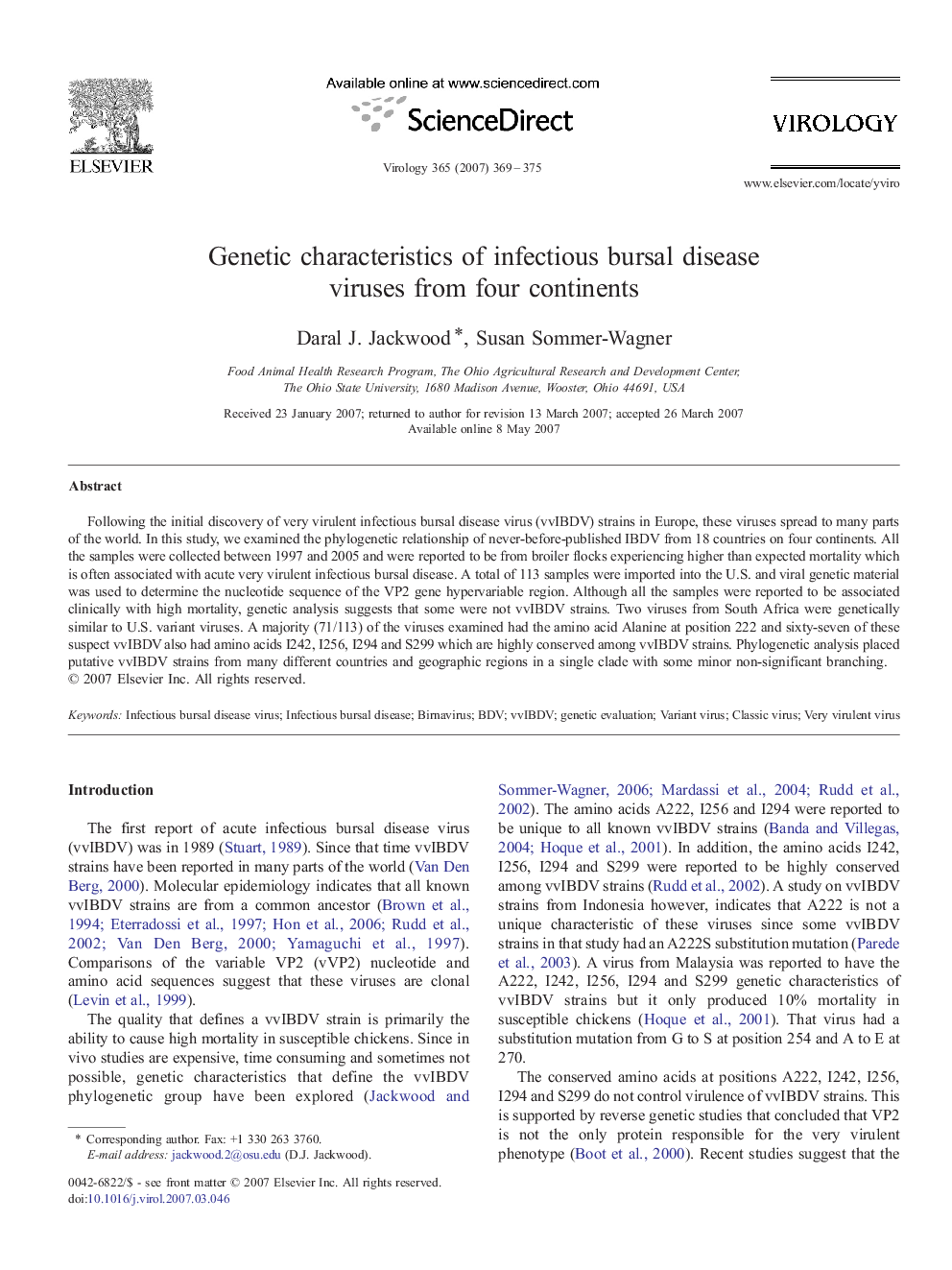| Article ID | Journal | Published Year | Pages | File Type |
|---|---|---|---|---|
| 3427257 | Virology | 2007 | 7 Pages |
Following the initial discovery of very virulent infectious bursal disease virus (vvIBDV) strains in Europe, these viruses spread to many parts of the world. In this study, we examined the phylogenetic relationship of never-before-published IBDV from 18 countries on four continents. All the samples were collected between 1997 and 2005 and were reported to be from broiler flocks experiencing higher than expected mortality which is often associated with acute very virulent infectious bursal disease. A total of 113 samples were imported into the U.S. and viral genetic material was used to determine the nucleotide sequence of the VP2 gene hypervariable region. Although all the samples were reported to be associated clinically with high mortality, genetic analysis suggests that some were not vvIBDV strains. Two viruses from South Africa were genetically similar to U.S. variant viruses. A majority (71/113) of the viruses examined had the amino acid Alanine at position 222 and sixty-seven of these suspect vvIBDV also had amino acids I242, I256, I294 and S299 which are highly conserved among vvIBDV strains. Phylogenetic analysis placed putative vvIBDV strains from many different countries and geographic regions in a single clade with some minor non-significant branching.
